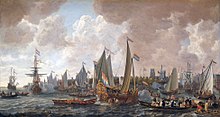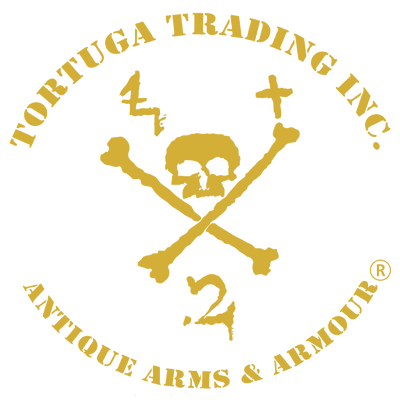Authentic Silver Crown, Great Britain, King Charles II, Dated 1662
Silver Crown, Great Britain, Charles II, First date of the first milled Crown of the restored king, Dated 1662. Rose below bust, edge date "1662".
Reference: KM# 417.5
CAROLVS · II · DEI · GRA ·, First laureate and draped bust of King Charles II right.
MAG BR·FRA ET·HIB REX·16 62·, Crowned cruciform shields, divided date above, legend around.
WEIGHT: 29.5 grams.
KING CHARLES II -
Charles II (29 May 1630 – 6 February 1685)[c] was King of Scotland from 1649 until 1651, and King of Scotland, England and Ireland from the 1660 Restoration of the monarchy until his death in 1685.
Charles II was the eldest surviving child of Charles I of England, Scotland and Ireland and Henrietta Maria of France. After Charles I's execution at Whitehall on 30 January 1649, at the climax of the English Civil War, the Parliament of Scotland proclaimed Charles II king on 5 February 1649. However, England entered the period known as the English Interregnum or the English Commonwealth, and the country was a de facto republic led by Oliver Cromwell. Cromwell defeated Charles II at the Battle of Worcester on 3 September 1651, and Charles fled to mainland Europe. Cromwell became virtual dictator of England, Scotland and Ireland. Charles spent the next nine years in exile in France, the Dutch Republic and the Spanish Netherlands. A political crisis that followed the death of Cromwell in 1658 resulted in the restoration of the monarchy, and Charles was invited to return to Britain. On 29 May 1660, his 30th birthday, he was received in London to public acclaim. After 1660, all legal documents stating a regnal year did so as if he had succeeded his father as king in 1649.
Charles's English parliament enacted laws known as the Clarendon Code, designed to shore up the position of the re-established Church of England. Charles acquiesced to the Clarendon Code even though he favoured a policy of religious tolerance. The major foreign policy issue of his early reign was the Second Anglo-Dutch War. In 1670, he entered into the Treaty of Dover, an alliance with his cousin King Louis XIV of France. Louis agreed to aid him in the Third Anglo-Dutch War and pay him a pension, and Charles secretly promised to convert to Catholicism at an unspecified future date. Charles attempted to introduce religious freedom for Catholics and Protestant dissenters with his 1672 Royal Declaration of Indulgence, but the English Parliament forced him to withdraw it. In 1679, Titus Oates's revelations of a supposed Popish Plot sparked the Exclusion Crisis when it was revealed that Charles's brother and heir presumptive, James, Duke of York, was a Catholic. The crisis saw the birth of the pro-exclusion Whig and anti-exclusion Tory parties. Charles sided with the Tories, and, following the discovery of the Rye House Plot to murder Charles and James in 1683, some Whig leaders were executed or forced into exile. Charles dissolved the English Parliament in 1681, and ruled alone until his death in 1685. He was allegedly received into the Catholic Church on his deathbed.
Traditionally considered one of the most popular English kings,[1] he is known as the Merry Monarch, a reference to the liveliness and hedonism of his court. Although Charles acknowledged at least twelve illegitimate children by various mistresses, he left no legitimate children and was succeeded by his Catholic brother James.

After the death of Cromwell in 1658, Charles's initial chances of regaining the Crown seemed slim; Cromwell was succeeded as Lord Protector by his son, Richard. However, the new Lord Protector had little experience of either military or civil administration. In 1659, the Rump Parliament was recalled and Richard resigned. During the civil and military unrest that followed, George Monck, the Governor of Scotland, was concerned that the nation would descend into anarchy.[20] Monck and his army marched into the City of London, and forced the Rump Parliament to re-admit members of the Long Parliament who had been excluded in December 1648, during Pride's Purge. The Long Parliament dissolved itself and there was a general election for the first time in almost 20 years.[21] The outgoing Parliament defined the electoral qualifications intending to bring about the return of a Presbyterian majority.[22]
The restrictions against royalist candidates and voters were widely ignored, and the elections resulted in a House of Commons that was fairly evenly divided on political grounds between Royalists and Parliamentarians and on religious grounds between Anglicans and Presbyterians.[22] The new so-called Convention Parliament assembled on 25 April 1660, and soon afterwards welcomed the Declaration of Breda, in which Charles promised lenience and tolerance. There would be liberty of conscience and Anglican church policy would not be harsh. He would not exile past enemies nor confiscate their wealth. There would be pardons for nearly all his opponents except the regicides. Above all, Charles promised to rule in cooperation with Parliament.[23] The English Parliament resolved to proclaim Charles king and invite him to return, a message that reached Charles at Breda on 8 May 1660.[24] In Ireland, a convention had been called earlier in the year, and had already declared for Charles. On 14 May, he was proclaimed king in Dublin.[25]

He set out for England from Scheveningen, arrived in Dover on 25 May 1660 and reached London on 29 May, his 30th birthday. Although Charles and Parliament granted amnesty to nearly all of Cromwell's supporters in the Act of Indemnity and Oblivion, 50 people were specifically excluded.[26] In the end nine of the regicides were executed:[27] they were hanged, drawn and quartered; others were given life imprisonment or simply excluded from office for life. The bodies of Oliver Cromwell, Henry Ireton and John Bradshaw were subjected to the indignity of posthumous decapitations.[28]
The English Parliament granted him an annual income to run the government of £1.2 million,[29] generated largely from customs and excise duties. The grant, however, proved to be insufficient for most of Charles's reign. For the most part, the actual revenue was much lower, which led to attempts to economise at court by reducing the size and expenses of the royal household[29] and raise money through unpopular innovations such as the hearth tax.[25]
In the latter half of 1660, Charles's joy at the Restoration was tempered by the deaths of his youngest brother, Henry, and sister, Mary, of smallpox. At around the same time, Anne Hyde, the daughter of the Lord Chancellor, Edward Hyde, revealed that she was pregnant by Charles's brother, James, whom she had secretly married. Edward Hyde, who had not known of either the marriage or the pregnancy, was created Earl of Clarendon and his position as Charles's favourite minister was strengthened.[30]
Great Plague and Great Fire
In 1665, Charles was faced with a great health crisis: the Great Plague of London. The death toll reached a peak of 7,000 per week in the week of 17 September.[37] Charles, with his family and court, fled London in July to Salisbury; Parliament met in Oxford.[38] Plague cases ebbed over the winter, and Charles returned to London in February 1666.[39]
After a long spell of hot and dry weather through mid-1666, what later became known as the Great Fire of London started on 2 September 1666 in a bakehouse on Pudding Lane. Fanned by a strong easterly wind and fed by stockpiles of wood and fuel that had been prepared for the coming colder months, the fire eventually consumed about 13,200 houses and 87 churches, including St Paul's Cathedral.[40] Charles and his brother James joined and directed the fire-fighting effort. The public blamed Catholic conspirators for the fire,[41] and one Frenchman, Robert Hubert, was hanged on the basis of a false confession even though he had no hand in starting the fire.[40]
TTI-542721








